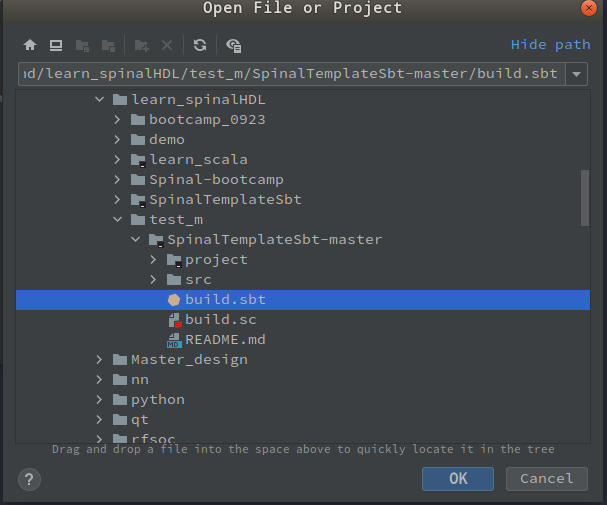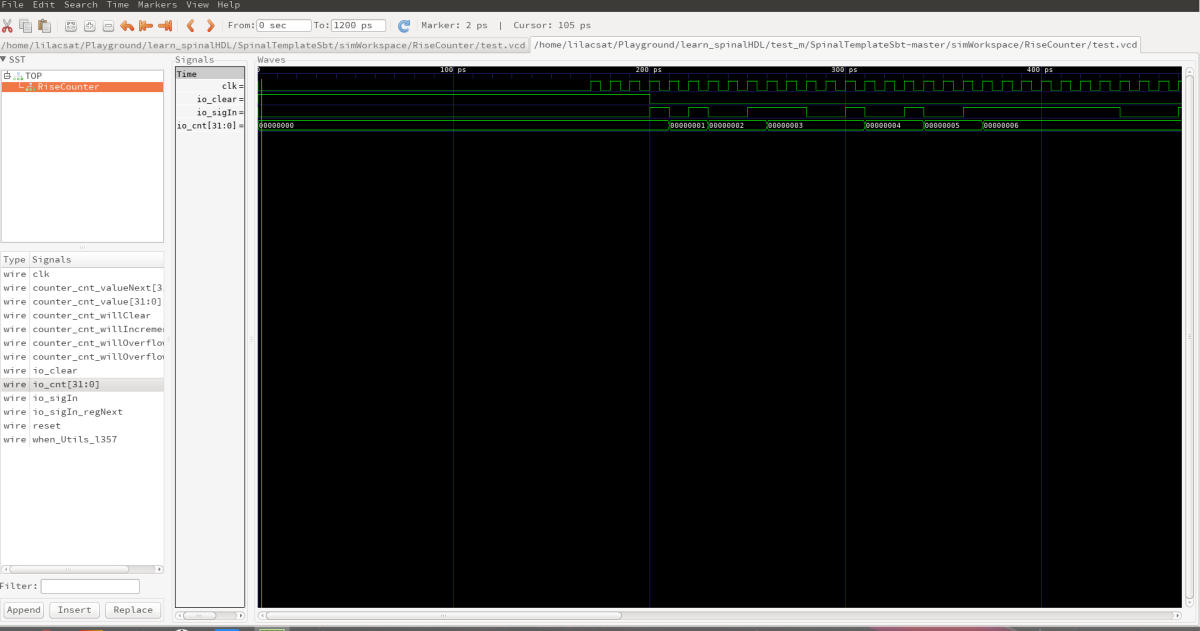[SpinalHDL] 从建立工程到查看仿真波形
折腾一下发现还是IntelliJ更好用一些,所以接下来采用IntelliJ IDEA学习SpinalHDL
安装环境不再赘述
建立工程
建立工程官方推荐的办法是从SpinalTemplateSbt创建。
下载好之后,解压到文件夹
unzip SpinalTemplateSbt-master.zip -d test_m/
在IntelliJ IDEA中导入工程

选择build.sbt之后,点击open as project导入工程
在src/main/scala/mylib中会包含MyTopLevel和MyTopLevelSim对应这Spinal描述文件和仿真文件,可以再这个基础上更改,或者新建一组文件。
创建一个电路
我们选择在mylib中再创建一个文件,MyTopLevel和MyTopLevelSim就用过参考
创建一个电路来检测输入信号上升沿个数。
package mylib
import spinal.core._
import spinal.lib._
class RiseCounter extends Component{
val io=new Bundle{
val sigIn=in Bool
val clear=in Bool
val cnt=out UInt (32 bits)
}
val counter=new Area{
val cnt=Counter(32 bits,io.sigIn.rise(False))
when(io.clear){
cnt.value.clearAll()
}
io.cnt:=cnt.value
}
}
//Generate the RiseCounter's Verilog
object RiseCounterVerilog {
def main(args: Array[String]) {
SpinalVerilog(new RiseCounter)
}
}
点击运行之后,最后在工程的根目录生成对应的Verilog代码
仿真
参考MyTopLevelSim编写RiseCounterSim
package mylib
import spinal.core._
import spinal.sim._
import spinal.core.sim._
import scala.util.Random
object RiseCounterSim {
def main(args: Array[String]) {
// 建立仿真 其中RiseCounter 来创建代码
SimConfig.withWave.doSim(new RiseCounter) { dut =>
// 创建时钟
//Fork a process to generate the reset and the clock on the dut
dut.clockDomain.forkStimulus(period = 10)
// 注意 io的电平赋值用 #=
dut.io.clear #= true
// 等待三个时钟周期,不知道是否有更好的写法
for(idx <- 0 to 3){
dut.clockDomain.waitRisingEdge()
}
dut.io.clear #= false
for(idx <- 0 to 99){
//Drive the dut inputs with random values
dut.io.sigIn #= Random.nextBoolean()
//Wait a rising edge on the clock
dut.clockDomain.waitRisingEdge()
}
}
}
}
之后点击运行之后,就可以自动启动仿真,并输出波形
波形路径在simWorkspace/RiseCounter/test.vcd可以使用GTKWave打开


